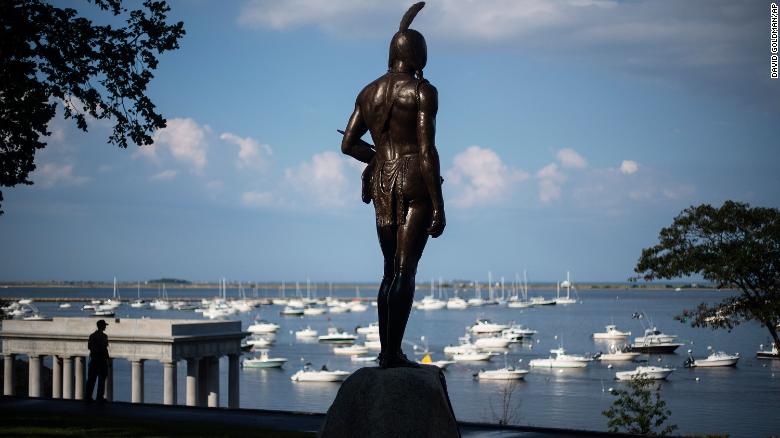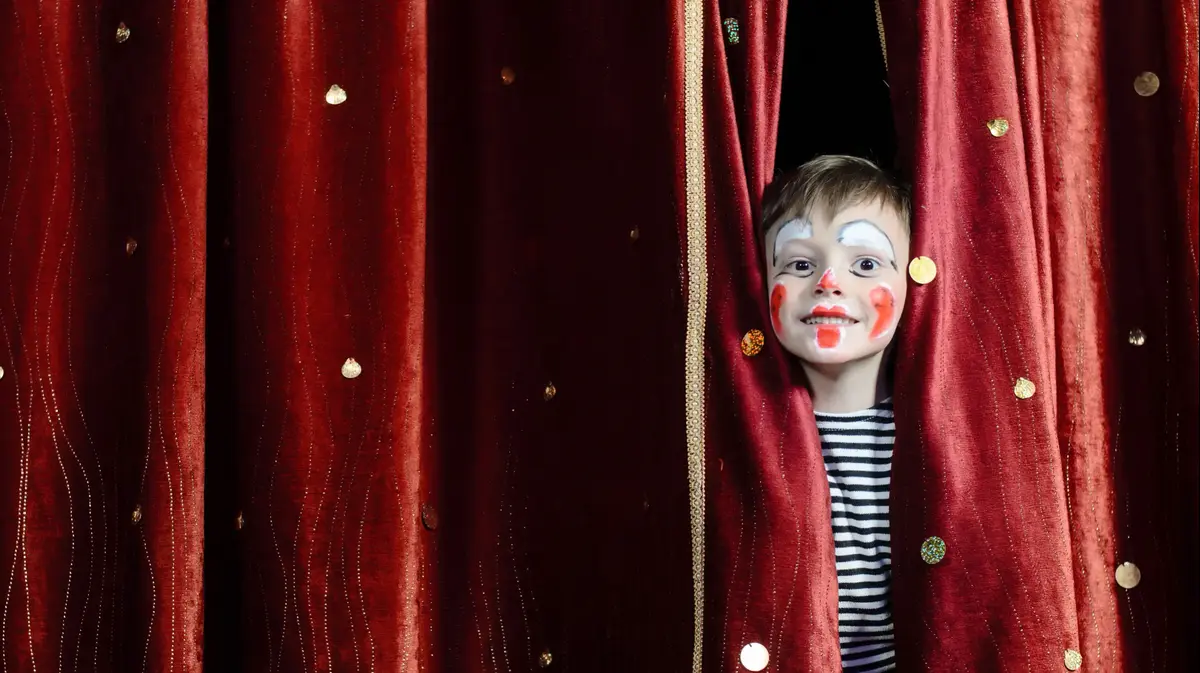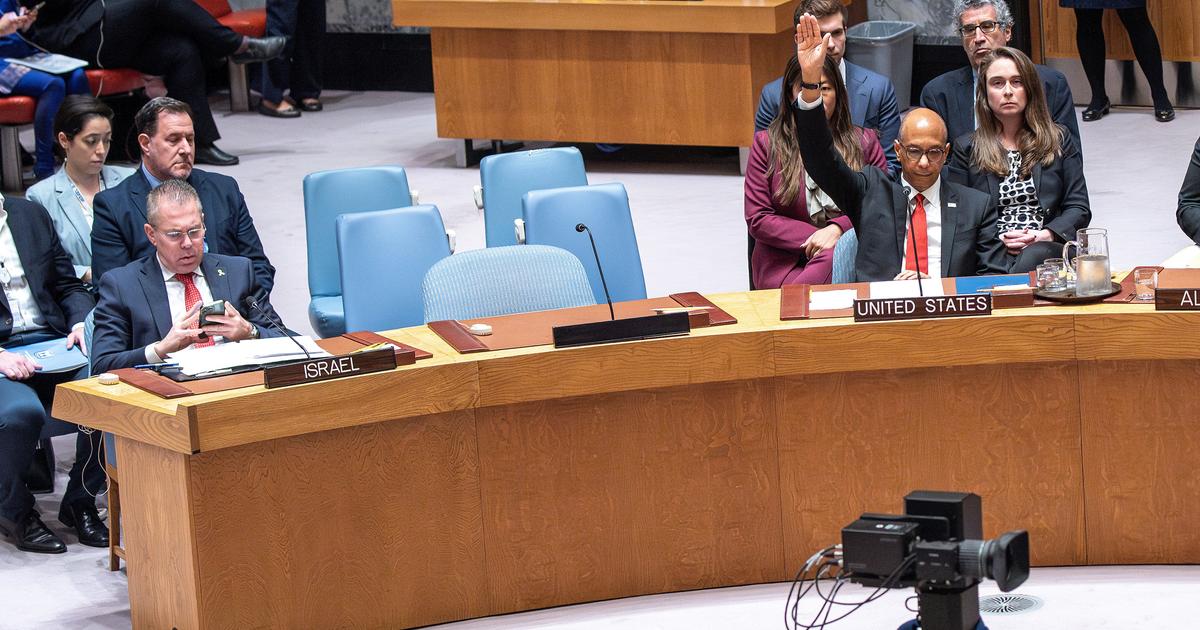Travelers break pandemic record on Thanksgiving 0:52
Washington (CNN) -
There is little similarity between the harvest festival of 1621 that eventually inspired Thanksgiving and the commemoration of the event in popular culture.
Historians doubt that anyone ever ate turkey.
The Wampanoag alliance with the Pilgrims was not so much about forging a community as it was about ensuring survival in a time of great change.
And, initially, the pious newcomers didn't even invite the Wampanoags to the festivities.
Thanksgiving Travelers Set New Record, According to Transportation Security Administration
More sobering still, the narrative that is often woven in the US does not mention the fact that the encounter of indigenous peoples with English settlers was marked by an incalculable loss of everything from genocide to disease and robbery. of land.
"As a holiday, Thanksgiving began in 1637 when it was proclaimed by Governor John Winthrop of Massachusetts Bay Colony to celebrate the safe return of the men who had gone to fight the Pequots in Mystic, Connecticut," noted journalist Matt Juul in 2014.
Juul explained: "The fighting led to the enslavement and massacre of more than 700 men, women and children of the New England-based tribe, a bloody precursor to what would be centuries of fighting for Native peoples in America."
advertising
For a long time, indigenous peoples have been struggling to set the record straight.
Established in 1970, the National Day of Mourning turns the fourth Thursday in November into something more honest.
Many indigenous people use the day not only to remember the suffering of the 1620s, but also to mark the struggles that indigenous people continue to face today in the form of, in addition to so many other things, violence against women and girls.
Historian: It is no use renaming the fall of Tenochtitlán 2:29
Here's more on this radical act of recovery:
What are the origins of the National Day of Mourning?
The day began to be commemorated unexpectedly.
In 1970, coordinators for the 350th anniversary of the Mayflower landing asked a respected Aquinnah Wampanoag activist named Wamsutta Frank James to speak at the banquet they were planning.
(There are two federally recognized Wampanoag tribes: the Mashpee Wampanoag tribe and the Aquinnah Wampanoag tribe.)
But the invitation depended on one condition: he had to deliver a copy of the speech in advance.
"It is with mixed emotions that I am here to share my thoughts," Wamsutta Frank James wrote.
"This is a time of celebration for you, celebrating an anniversary of a beginning for the white man in America. A time of looking back, of reflection. It is with great regret that I look back at what happened to me. village".
The speech, which recalled horrors such as slavery and the murder of indigenous peoples by Europeans, stunned planners.
Biden is the first US president to issue a proclamation commemorating Indigenous Peoples' Day
"I think they wanted a symbolic Indian, and I think they expected me to sing the praises of the pilgrims, to thank them for bringing 'civilization' to these shores," Kisha James, granddaughter of Wamsutta Frank James told CNN.
"They said he couldn't give that speech because it was too inflammatory and that they would write him a new one. But he refused to have words put into his mouth."
Deciding that this story was too important for the country to ignore, Wamsutta Frank James joined other Indians in creating a "National Day of Mourning" as an indigenous response to the Thanksgiving holiday.
"Really, what we've been doing on National Mourning Day every year since 1970 is telling the truth, explaining why we don't give thanks for what happened in the 1620s or later, to this day," he said. Mahtowin Munro, who is Lakota and the co-leader of the United American Indians of New England.
What happens on the National Day of Mourning?
The day is a mixture of commemoration and protest.
Participants will meet at noon on the fourth Thursday in November at Cole's Hill, which is above the Plymouth Harbor area, where Plymouth Rock is located.
There is also a statue of Ousamequin, or Massasoit, who was a leader of the Wampanoags at the time of the pilgrims' arrival.
The people gathered on the hill begin with a spiritual ceremony.
Afterwards, participants attend a rally where speakers speak on a variety of topics.
There is at least one person who tells the story of National Mourning Day.
After the rally, participants march to Plymouth Rock for a second rally.
A statue of Massasoit.
"There, we talked about how, in Malcolm X's words, 'we didn't land on Plymouth Rock. Plymouth Rock landed on us,'" Munro explained, referring to how, for the indigenous peoples of the region, the 1620s ushered in of colonization (or "the beginning of the end", as Wamsutta Frank James wrote in his repressed speech).
The participants then march to an area of Plymouth known as Post Office Square.
It is where the settlers displayed on a pike the severed head of Metacom, a revered Wampanoag leader who tried to unite all indigenous peoples against the English.
Although National Day of Mourning faced a setback in its early years, the event has gained more and more momentum over the decades.
"I would say that, in general, people have become more aware that something is wrong with the Thanksgiving myth and that there is this protest that happens every year in Plymouth," said Kisha James.
"And that's reflected in our numbers. The first National Mourning Day there were 150 to 200 people, which was actually pretty good for 1970. Now, there are 1,500 to 2,000 a year. We also have a live broadcast so that people from all over the world can see the National Day of Mourning. "
Is National Mourning Day just the past?
No. Contemporary themes are part of many of the speeches.
As an example you can take this year.
"We will have a speaker from a tribal community in Louisiana that has been severely affected by climate collapse, and specifically Hurricane Ida," Munro said.
"We will have someone who has just returned from COP26 talk about how indigenous peoples were largely excluded from that (event) and how world leaders refuse to listen to what indigenous peoples around the world say about what is must do to address climate justice. "
Other issues will also receive attention, including resistance to the pipeline, the crisis of women, missing and murdered girls, and the Two-Spirits and Land Back movements.
"Sometimes, I think non-indigenous people imagine us as stagnant, historically. They think of us as stagnant in the past," Munro said.
"But as we talk about our history, because if we don't it will be completely erased, we are active in our resistance and in what is happening now."
The tragic story behind Indigenous residential schools in Canada
Kisha James echoed some of these sentiments and, in particular, emphasized the importance of realizing that history is never history.
"There is a tendency not to understand that the past actually has consequences for the future," he said.
"There is a tendency to acknowledge that what the pilgrims did was bad, but then they act as if everything is fine now."
The long and brutal history of state repression of indigenous voices motivated the founders of the National Day of Mourning to allow only indigenous peoples to speak at the event.
"The elders started that (having only indigenous speakers) in 1970. They said it is because every other day of the year, we are silenced or we have white people speaking for us, as if we are unable to speak for ourselves," Munro explained.
"They said that people should stop at least one day a year and just listen to indigenous people. We also believe that non-indigenous people should listen to indigenous voices regularly, especially to understand the real solutions to the climate crisis offered by the indigenous peoples. original caretakers of the earth ".
Analyst: Outrage Over Internees In Canada Is Global 10:20
indigenous communities















